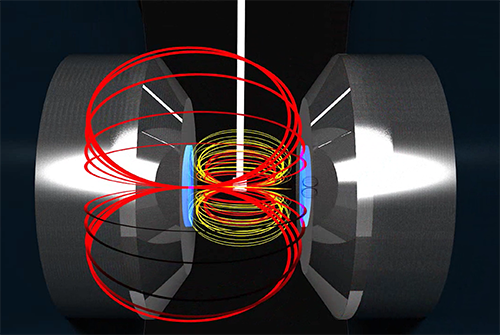 We have added two new videos to the bottom of our VSM/AGM Systems page, explaining how vibrating sample and alternating gradient magnetometry work. In each system, the sample under study is magnetized by a uniform field created between the electromagnets’ poles, but how we sense the magnetic properties for material characterization depends on the type of system used. As shown in the animations, in a VSM, the sample moves (vibrates) inducing an electric signal in the detection coils, while in an AGM, the gradient coils generate an alternating excitation field that causes the sample to move and its displacement is measured by a piezoelectric force sensor.
We have added two new videos to the bottom of our VSM/AGM Systems page, explaining how vibrating sample and alternating gradient magnetometry work. In each system, the sample under study is magnetized by a uniform field created between the electromagnets’ poles, but how we sense the magnetic properties for material characterization depends on the type of system used. As shown in the animations, in a VSM, the sample moves (vibrates) inducing an electric signal in the detection coils, while in an AGM, the gradient coils generate an alternating excitation field that causes the sample to move and its displacement is measured by a piezoelectric force sensor.
If you would like a more in-depth explanation regarding the differences between VSM and AGM technology and the types of magnetics research each is more suited for, contact Lake Shore Sales (sales@lakeshore.com or 614-891-2244). Also, be sure to sign up for our quarterly magnetics and material characterization newsletters, which will help keep you up to date on the latest in Lake Shore magnetometry product offerings, research topics, helpful tips, and more.
